
Guests
- Rebecca Petersinternational arms control advocate and former director of the International Action Network on Small Arms.
After the 1996 Port Arthur mass shooting, Australia passed sweeping new gun control measures that largely ended mass shootings in the country. We speak with Rebecca Peters, an international arms control advocate who led the campaign to reform Australia’s gun laws after the massacre. She recalls how in just 10 days the prime minister brokered a deal with local officials to pass higher standards around gun safety that would prevent any mass shootings for the next 20 years. “We don’t think at all about the possibility of being murdered as we go about our daily lives in Australia,” says Peters.
Transcript
AMY GOODMAN: This is Democracy Now! I’m Amy Goodman, with Nermeen Shaikh.
As we continue to look at the school shooting massacre in Uvalde, Texas, we’re joined by Rebecca Peters, international arms control advocate, former director of the International Action Network on Small Arms. She led the campaign to reform Australia’s gun laws after the 1996 Port Arthur massacre, when a gunman shot dead 35 people at a cafe. After the attack, Australia cracked down on gun violence, outlawing automatic and semiautomatic rifles. More than 640,000 weapons were turned in to authorities in a nationwide buyback. Rebecca Peters is joining us from Guatemala.
Rebecca, thank you so much for being with us again. I feel like we keep having you back after all of these massacres, but it is so important, because there was complete paradigm shift in Australia, a country where so many didn’t think it was possible. Talk about what happened in 1996, the horror of the Port Arthur massacre, but then how the country responded.
REBECCA PETERS: Well, thanks, Amy.
Yes, I mean, thinking back, we had — back then, we had a situation — it was similar but not as bad, of course, as in the United States, which is that we did have — we had mass shootings every — about once a year, we had some kind of a mass shooting. And semiautomatic rifles were available in some states. The laws vary state by state in Australia as in America. And we also had a similar sort of standoff, where both of the major political parties were intimidated by the gun lobby, which said, “Whichever one of you moves to strengthen the gun laws, we will come after you in the election.” And so, it was a similar kind of scenario in that way, although we never had the very high rates of gun violence, not as high, because we did have — our basic level of gun control was higher.
What happened in 1996 was this massacre was so enormous, and it took place in a tourist location where a lot of people have been for holidays or for honeymoons and where — and people, because it was a tourist location, the victims came from every state and territory in the nation. And so, every parliament had a constituent or more who were affected directly by this massacre. And we had just had a new conservative prime minister elected, and so he had — I guess he saw that he had a few years ahead of him before he had to face another election. And also, I mean, it was just enough. Enough was enough. We had had too much of this. And what he was able to do was he called the states and territories together and said, “I’m going to fix this.” And the amazing breakthrough was that both political parties agreed to support the changes. And that left the gun lobby with nowhere to go.
And so, very quickly — also, the research, the policy recommendations, it had already been done, by us in civil society, by research institutes. I mean, it was pretty clear what the changes were that were needed. And in 10 days, we got an agreement that all the states and territories would change their laws to a much higher standard. And they did. And so, that meant outlawing semiautomatic rifles and shotguns; a much higher standard of background checks and licensing that was required, including the proof of a legitimate reason to have the sort of gun you want to buy; registration of all firearms, so that if someone displays some kind of behavior that suggests they shouldn’t have a firearm, that that firearm can be taken away, and also so that you can track the accumulation of arsenals; and a range of other things, as well.
But, basically, the laws became pretty much uniform across the country. And as part — as you mentioned earlier, as part of that, the ban on semiautomatics, those guns were bought back, so they’re no longer in circulation. And because the law changed at the same time, those — like, sometimes there are buybacks, but the law doesn’t change, so it’s kind of like just mopping the floor while the tap is still on. If you change the law at the same time, then those guns cannot be immediately replaced with similar weapons.
And really, the result has been a spectacular success. We didn’t have another mass shooting incident for almost 25 years. And we just generally have much lower rates of gun violence, and also a lower rate of fear. You know, we don’t think at all about the possibility of being murdered as we go about our daily lives in Australia.
NERMEEN SHAIKH: Rebecca, a couple of things that might be — apart from the fact, as you mentioned, that Australia, even prior to these changes, had much fewer mass shootings than the U.S., could you talk about the relative strength of the gun lobby there, whether the electoral system in Australia is so dependent on funding from lobbyists and corporations, number one, and then, second, that Australia, of course, had nothing like the Second Amendment — there’s no constitutional right in Australia to bear arms — and what impact that might have had?
REBECCA PETERS: Yes, that’s right. So, we had the — we never had the idea in — well, there are Australians who believe that it is a right to have a gun, but that was never legally acceptable, or even socially acceptable, really. And, in fact, with the new laws, they actually, most of them, say really specifically ownership of guns is a privilege that is subject to the overriding concern for public safety. So that’s really clear, that public safety trumps individual ownership of weapons. And that was a huge advantage we had, of course.
And also, as you mentioned, it’s true we had a gun lobby that was cranky and threatening and had succeeded, in some cases, in intimidating or in probably contributing to the defeat of some electoral candidates, but they did not have the power that the American gun lobby has, because our electoral system — well, we have a parliamentary system. But also, the role of money in politics, although we still complain in Australia that there’s too much money in politics, certainly, the ability to so kind of outright just buy the politicians and the policies you want is much less in Australia. It’s true that we had those distinct advantages before this all took place.
AMY GOODMAN: Rebecca, very quickly, we have less than a minute, but if you can talk about how the U.S. exports this violence around the world, the U.S. being by far the largest small arms exporter in the world?
REBECCA PETERS: Yes. I mean, the U.S. is the largest producer, the largest exporter, both illegal and legal. So, when we talk about exports, you often think of legal exports of weapons, but, of course, the trafficking of guns from the U.S., because of the loose regulation especially of the southern border states, means that the U.S. is also the biggest exporter of illegal weapons. And that means that the violence problems that occur, especially in Latin America, are very directly traceable, in large part, to the American production of weapons and of violence. And so, it’s why all of us in the rest of the world have a big interest in America doing something about its just unbelievably lax regulation of weapons.
AMY GOODMAN: Rebecca Peters, we want to thank you for being with us, international arms control advocate, former director of the International Action Network on Small Arms, led the campaign to reform Australia’s gun laws after the Port Arthur massacre. She’s speaking to us from Guatemala.

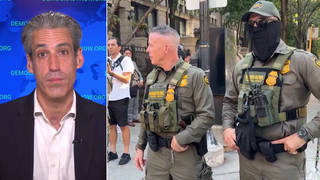
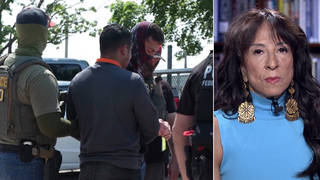
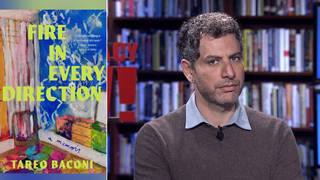
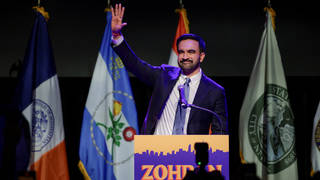





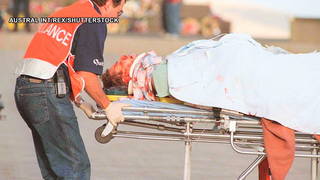
Media Options